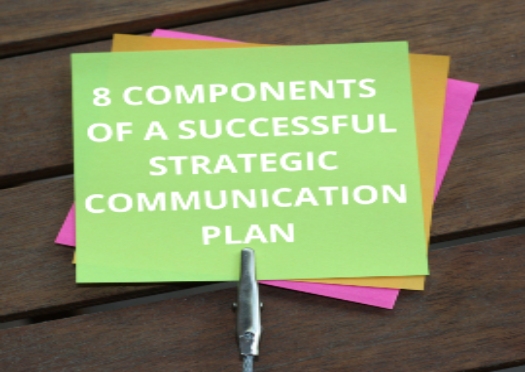Eight Components Of A Successful Strategic Communication Plan
Is your business communication strategy driving sales and delivering the results you want? No? Well, to get results you need a plan – a strategic communication plan that clearly articulates who you are, what you do, and what defines you, ensuring you stand out in the crowd. If you want to build your business, you need to own your story.
As a strategic PR & Business Communication agency, we have crafted numerous communication plans for our clients, and we don’t mind sharing some tips on the essentials required for your communication plan to become successful.
1. Analysis
Firstly, you need to review your company’s current state. We have found an effective assessment method to be a workshop with internal stakeholders to establish your company’s strengths, weaknesses, opportunities, and threats (SWOT analysis). You should also review your existing marketing and business communications, current messaging, communication channels as well as your digital and social media presence. These key findings will help you reach the following step.
2. Communication Initiatives
Based upon your findings in the discovery phase above, you might find that communication initiatives to be addressed include the development or update of any of the following: positioning statements, key messages, company profile, visual standards guidelines, brand manual, press kit, social media policy, media engagement and spokespeople policy, content creation and governance policy, crisis communications policy and manual, biographies of key spokespeople, press release template, fact sheet, image library, hashtags, and internal communication plans.
3. Communication Goals and Objectives
The next step is to set the objectives for your strategic communication plan. What do you want to achieve? Here are a few suggestions for you to fill in:
• to successfully position the company as an xxx, focused on xxx and known for its xxx
• to achieve visibility with a mix of xx% B2B and xx% B2C press coverage and content mix
• to increase traffic to the website by xx% and online sales by xx%
• to increase organic growth on social media platforms by xx% and engagement by xx%
• to increase CEO’s share of voice in the media by xx% through thought leadership
4. Audience Segmentation
In order to understand your stakeholders and audience, you need to take a deep dive into their information needs and perceptions. Understanding and segmenting your audience is imperative to creating the right messages for each of them, whether they are current or potential customers, investors, collaborative partners, employees, etc.

5. Key Messages and Content Pillars
What do you want to say and what would be relevant for you to talk about? What’s your expertise? Establish some content pillars related to your product, service, and industry. Content pillars are topics and themes which would be relevant and beneficial for you to create content around in order to achieve your communication objectives.
6. Channel Map
Key messages, frequency, style, and format are dependent on the channels selected. Content needs to be fit-for-purpose and adapted to either digital, social media, public relations, internal communications, thought leadership, etc.
7. Content Matrix and Editorial Plan
This is where your communication initiatives get put into action. Grab a calendar and populate your production schedule with content and PR activities based on the above six steps. You need to get specific and detailed with the content matrix and editorial plan.
8. Measurements and analytics
Finally, don’t forget to measure your success. There are different methods, depending on your content and channels but most importantly your communication objectives. Here are some suggestions:
• Percentage of coverage achieved in key target media
• Targets for AVE – advertising equivalent value of press coverage received
• Share of voice in the media compared to key competitors
• Key message penetration and tone of voice analysis
• Website statistics and social media metrics: followers, likes, shares, and engagement
• Google analytics: unique visitors, page views, time spent, referrals, leads, and click-throughs
• Google or Facebook reviews
• Customer satisfaction surveys or internal engagement surveys
If you have any questions or need help with your business communication strategy development, feel free to contact In2 Consulting
By Cristina Kristensen, Director of Communications






 +971 4 455 8499
+971 4 455 8499

